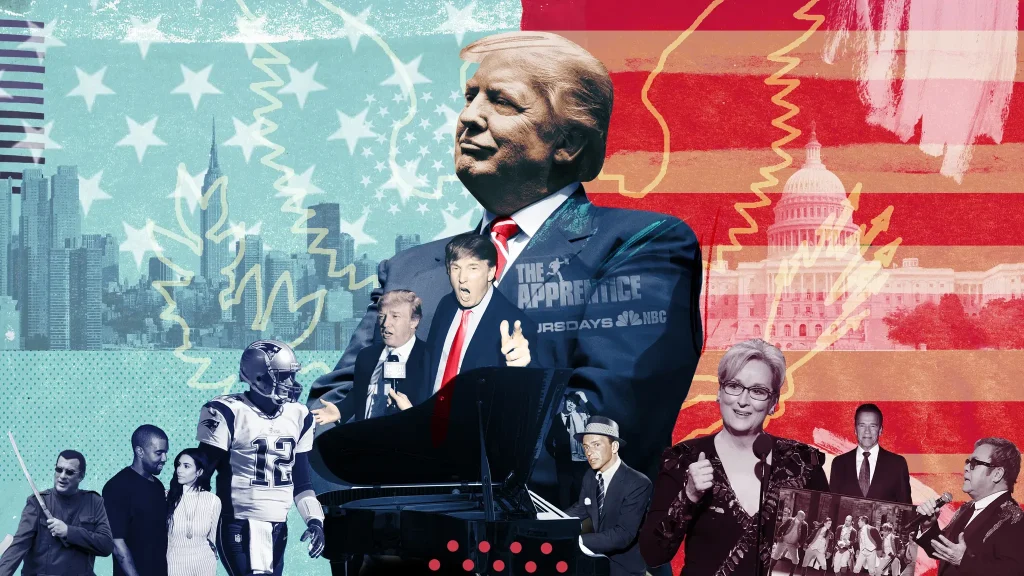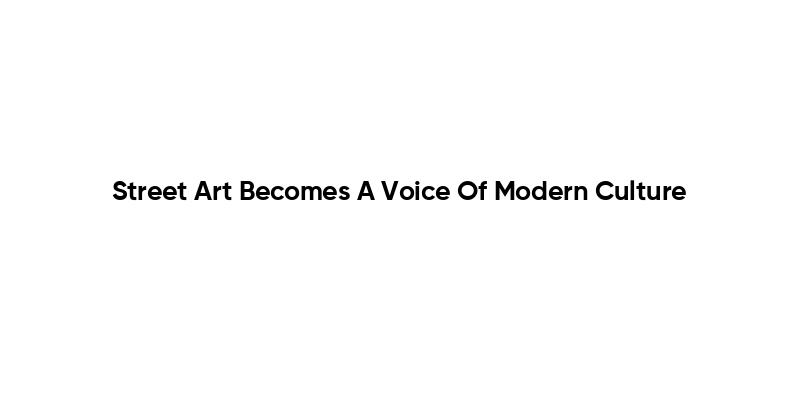Trump’s A.I.-Inspired Aesthetic reveals a striking intersection of politics and digital artistry, reflecting a reality where traditional human input is diminished. As the former president leans into A.I. imagery, he curates an experience that is more about spectacle than substance, transforming political propaganda into a visual journey. His commitment to crafting a fantastical version of himself is marshaled through digital art that serves as both self-adulation and a statement of power. The Trump presidency stands at the helm of this trend, showcasing a unique blend of golden-haired grandeur and hyperrealist interpretations of triumph that have captivated audiences online. As we delve deeper into this aesthetic, the fusion of Trump art and machine-generated visuals invites us to explore not just the man himself, but the underlying cultural implications of his ephemeral yet impactful vision.
Delving into the extravagant world of Trump’s pixelated representations, one finds a captivating exploration of his colorful persona magnified through the lens of modern technology. This digital spectacle reflects a broader trend where political imagery and artistic expression intertwine, showcasing a brand of kitsch that dazzles while often obscuring deeper meanings. The synthesis of digital art with Trump’s flamboyant character evokes a synthetic yet striking vision of his leadership, tethered to both nostalgia and bravado. This trend is not merely about showcasing his personality; it is also a strategic orchestration of visual narrative that resonates with a dedicated audience. Throughout his career, a self-fashioned mythos has been propped up by crafted images that spark intrigue and, at times, bewilderment, drawing followers into a world where the line between reality and artifice blurs.
The Fascination with A.I. Imagery in Trump’s Aesthetic
Donald Trump’s presidential aesthetic is deeply entwined with the rising influence of artificial intelligence in digital art production. His affinity for A.I.-generated imagery reflects a unique intersection of political propaganda, celebrity culture, and mass media saturation. In a world increasingly driven by visuality, Trump’s embrace of A.I. allows him to craft a hyper-realistic version of himself that embodies power and authority, often personified through manipulating historical symbols and mythmaking. From digital illustrations depicting him in heroic poses to memes projecting his dominance, A.I. imagery serves as a mechanism for conveying an idealized version of Trump, appealing directly to his base’s sentiments and fantasies.
This aesthetic not only enhances his public persona but also utilizes existing cultural narratives to create engaging, shareable content across social media platforms. The A.I.-generated images of Trump, such as those where he appears god-like or invincible riding a lion, exemplify how digital art sustains a narrative that glorifies his leadership and appeals to the emotional and political desires of supporters. Through these images, Trump can sidestep traditional media channels, directly engaging with his audience and reinforcing his iconic brand merely by leveraging the capabilities of technology.
Trump’s Digital Art: Merging Fantasy with Political Reality
The world of Trump’s digital art blurs the lines between social commentary and surreal fantasy. As an extension of political propaganda, these hyperbolic representations reflect a yearning for a simpler binary of good versus evil, which resonates deeply within his supporter base. Digital art pieces created during and after his presidency showcase him in exaggerated scenarios filled with symbolism, from military might to heroic undertones that reinforce a narrative of his leadership as necessary and almost divine. Often lacking in subtlety, these artworks serve as clear, populist representations that amplify Trump’s mythology.
In the use of digital spaces, Trump allows these outlandish representations to spread virally, engaging an audience that craves clarity in a world muddled by political complexity. The simplicity of the images—where Trump is often depicted as larger-than-life—ensures that they are easily digestible, making them perfect vehicles for reinforcing his brand of politics. By presenting himself in a grander context through digital art, he establishes an enduring legacy that ties aesthetic choices to ideological claims, further blurring the distinction between art and rhetoric.
The Role of Art in Shaping Trump’s Public Image
Throughout his presidency, art has played a significant role in shaping Donald Trump’s public image and has been used as a tool for political gain. The visual representations created during his time in office are not just decorative; they are deliberate statements of intention and identity that seek to invoke a sense of loyalty among his supporters. From portraits that glorify his likeness to digital renderings that emphasize strength and resolve, these artistic choices are part of a broader strategy to cultivate a heroic narrative around his leadership.
By surrounding himself with art that favors grandeur and nostalgia, Trump seeks to position himself within a lineage of iconic leaders, reminiscent of historical figures who wielded power decisively. This tactic involves a selective artistic expression that enhances perceptions of his authority while diminishing the complexities of his presidency. The transformation of public perception through art illustrates a calculated understanding of how imagery can shape political discourse, making it a key component of his populist approach.
Digital Propaganda: The Empire of Trump’s Imagery
In the age of social media, digital propaganda has taken on new dimensions, and Trump has adeptly utilized this landscape to fortify his personal brand. The infusion of his likeness into various forms of digital art speaks not just to his vanity, but also to a strategic endeavor aimed at mobilizing support and creating a formidable visual identity. These images act as ammunition in the ongoing culture wars, crafting a narrative that distorts or amplifies reality, depending on the audience’s ideologies. Trump’s use of technology transforms political engagement into a visually rich spectacle, where memes, A.I.-generated art, and edited photographs serve as modern-day political cartoons.
Amidst this digital landscape, the effectiveness of Trump’s image as a political tool hinges on its ability to resonate emotionally with his audience. The aesthetics curated through art serve dual purposes: they project a powerful persona while simplifying complex political narratives into more palatable visual formats. By marrying Trump’s political rhetoric with strong visual symbolism, this digital propaganda ensures that his messages remain memorable and oft-repeated, reinforcing the collective identity of his followers while challenging opposition narratives.
A.I. Art as a Reflection of Trump’s Presidency
The application of A.I. in creating art that features Trump is emblematic of his approach to governance and public image: bold, brash, and often oversimplified. By harnessing A.I. technology to generate flattering images that resonate with his base, he effectively leverages innovation to craft a visually compelling narrative. This reliance on artificially created representations illustrates how Trump’s presidency has often prioritized appearance over substance, culminating in a style of governance that values perception nearly as much as policy.
Furthermore, the art produced with A.I. reflects a deeper societal commentary, as these images can encapsulate the zeitgeist of a polarized America. They transmit the fear and hope of a demographic that longs for a straightforward leader during tumultuous times. The walls of reality begin to blur, and the stylized versions of Trump conveyed through digital art contribute to a cultural moment where art intersects with politics, proving both entertaining and alarming in its capacity to shape conventional wisdom about his time in office.
Nostalgia and Hero Worship in Trump Imagery
Central to the discussion of Trump’s aesthetic is the prevalent theme of nostalgia and the construction of a heroic leader. The digital artworks proliferated during his presidency often depict him in scenarios dripping with historical significance or mythic tones, reinforcing the illusion of Trump as a savior figure. This aesthetic choice cleverly draws on nationalistic sentiments and a collective yearning for a time perceived as better, creating a tableau where Trump stands as a bulwark against perceived threats, thus garnering fervent loyalty.
Such imagery invokes an emotionally charged response among his supporters, reminding them of a time when authorities seemed unassailable and values were perhaps more clearly defined. Through the lens of digital nostalgia, the art doesn’t just capture the contemporary moment but reaches back into the past, altering perceptions of history and revising the narrative around political leadership. This function of art under Trump’s banner serves as a reminder of the power of visuals in shaping cultural identities and collective memory in modern political arenas.
A.I. and the Future of Political Messaging
As A.I.-generated art continues to evolve, it will inevitably transform the landscape of political messaging in profound ways. Trump’s unapologetic embrace of technology to craft his identity and narrative positions him as a pioneer in utilizing these tools for political gain. The implications of this trend stretch beyond mere aesthetics, indicating a potential shift in how politicians will engage with the electorate, moving toward more targeted, tech-driven strategies that speak directly to the emotional wavelengths of their constituents.
The advent of digital artistry in political discourse also prompts a reevaluation of authenticity in leadership. As A.I. blurs the lines between reality and manipulation, it raises crucial questions about the veracity of political images and narratives in shaping public opinion. Trump’s techniques might suggest a future where political personas are crafted not by their actions but by the images engineered to symbolize them, highlighting the escalating importance of digital literacy and critical engagement with the political art that floods our screens.
The Symbolism of Opulence in Trump’s Art
Trump’s aesthetic is inextricably linked to themes of opulence and extravagance, reflecting his personal brand that emphasizes wealth and status. Digital and traditional artworks featuring Trump frequently showcase him in luxurious settings, adorned with symbols of power to convey grandeur and authority. The prevalence of gilded visuals and rich textures within his imagery serves both as a self-agrandising tool and as a way to project an idealized version of American success to his base, who hold wealth as a significant value.
This emphasis on opulence not only shapes how supporters view Trump but also acts as a visual language, communicating aspirational ideals about success. By aligning himself with images of abundance, Trump fosters a sense of envy and ambition among his followers, prompting them to aspire to this lifestyle. The psychological impact of such artwork cannot be understated; it reinforces a narrative that connects personal worth with visible success, thereby entwining Trump’s identity with that of an invincible mogul who embodies the American dream.
Examining Trump’s Complex Relationship with the Arts
Trump’s interaction with the arts is as multifaceted as it is provocative, often invoking contrasting feelings among various public audiences. On one hand, he embraces art that glorifies his presidency and personal image—in the style of political propaganda meant to appeal to a specific voter base. Conversely, his relationship with the broader artistic community tends to be fraught, as many artists vehemently oppose his policies and rhetoric, positioning him as a divisive figure in an otherwise flourishing cultural landscape.
This tension manifests itself in the way Trump deploys art functionally and symbolically within his political framework. By using artwork that he considers flattering, he attempts to position himself as a worthy subject within the world of fine art, yet the disdain from many in the artistic community reflects an ongoing conflict wherein art is wielded as a weapon both for and against political narratives. Trump’s complex engagement with the arts ultimately underscores a crucial observation: mores surrounding cultural production can carry political weight, and in Trump’s case, that engagement demands recognition within the fabric of his presidency.
Frequently Asked Questions
What is Trump’s A.I.-Inspired Aesthetic in relation to digital art?
Trump’s A.I.-Inspired Aesthetic combines elements of political propaganda with digital art, featuring A.I. imagery that reflects a hyperrealistic portrayal of Trump. This aesthetic often emphasizes power and wealth through exaggerated representations, blending traditional artistic themes with modern technology.
How does A.I. imagery influence perceptions of Trump’s presidency?
A.I. imagery significantly influences perceptions of Trump’s presidency by creating visually striking art that reinforces his persona. These digital creations often depict Trump in fantastical scenarios, aiming to elicit admiration and even worship, thereby strengthening his political branding.
Who is the artist associated with Trump art that embodies his aesthetic?
Jon McNaughton is the artist frequently associated with Trump’s aesthetic, often dubbed MAGA’s ‘court artist.’ His work utilizes a flat, hyperrealist style to depict Trump in heroic and nostalgic ways, creating images that resonate with his supporters and are designed for social media virality.
What role does political propaganda play in Trump’s A.I.-Inspired Aesthetic?
Political propaganda plays a crucial role in Trump’s A.I.-Inspired Aesthetic, as it utilizes A.I. generated visuals to craft narratives that glorify his leadership. Such imagery serves to manipulate public perception, age-old techniques are now enhanced by digital manipulation to create compelling, partisan visuals.
How has Trump’s use of digital art evolved during his presidency?
Trump’s use of digital art has evolved from traditional political imagery to a more aggressive deployment of A.I. imagery that reflects a desire for control over his portrayal. His administration has fostered a landscape where digital representations are leveraged to dominate narrative and shape public opinion.
What characteristics define the style of Trump art produced with A.I.?
Characteristics of A.I.-inspired Trump art include hyperrealistic details, exaggerated symbols of strength and power, and a penchant for kitschy nostalgia. This style often utilizes bright colors and grand themes, presenting Trump as a larger-than-life figure, disconnected from reality and firmly within a fantasy narrative.
In what way do the themes in Trump’s A.I.-Inspired Aesthetic reflect societal views?
Themes in Trump’s A.I.-Inspired Aesthetic reflect societal views by encapsulating a blend of populist sentiment and individualistic appeal, often mirroring the exaggerated desires for power and wealth prevalent in contemporary culture. This aesthetic aims to resonate with followers who perceive Trump as an emblem of American greatness.
How does digital art created during the Trump presidency compare to prior political art?
Digital art created during the Trump presidency sharply contrasts with prior political art by utilizing A.I. to produce rapid, often meme-like images that cater to the viral nature of social media. This shift provides an immediacy and shapes a visually aggressive narrative that traditional political art lacked.
What impact does Trump’s A.I.-Inspired Aesthetic have on his supporters?
Trump’s A.I.-Inspired Aesthetic has a profound impact on his supporters by fostering a collective identity through visually engaging and emotionally charged imagery. These representations serve to validate their beliefs and reinforce loyalty, often blurring the lines between reality and the fantastical world portrayed in the art.
How does Trump’s aesthetic affect the political landscape in America?
Trump’s aesthetic, characterized by A.I. imagery and bold representations, reshapes the political landscape by creating new forms of engagement and membership through visually driven narratives. This phenomenon challenges traditional political discourse and emphasizes visual identity over substantive debate.
| Key Points |
|---|
| Trump’s aesthetic emphasizes a literal interpretation of art and power, often depicted through A.I.-generated imagery. |
| He promotes a vision of grandeur, utilizing symbols and imagery that resonate with his supporters while often lacking depth. |
| A.I. technology plays a significant role in generating partisan content that simplifies complex narratives into digestible visuals. |
| Trump’s presidency has blurred the lines between reality and spectacle, reducing individuals and experiences to mere symbols for his narrative. |
| His administration uses digital images and propaganda to reshape public perception, reinforcing his personal brand and political narrative. |
| The merger of Trump’s personal aesthetic with A.I. tools signals a shift towards a world where human experience is increasingly mediated by artificial constructs. |
Summary
Trump’s A.I.-Inspired Aesthetic represents a fascinating intersection of technology and personal branding, illustrating how an individual can reshape reality through digital artifice. In his pursuit of a world that elevates his image and narrative, Trump utilizes A.I. tools to craft a spectacle that both captivates and confounds. This aesthetic is not merely superficial; it is a deliberate strategy aimed at promoting a gilded version of his reality while suppressing the complexities of the human experience. As such, the implications of this trend extend far beyond Trump’s image, prompting us to consider the broader effects of technology on our understanding of authenticity and representation.



